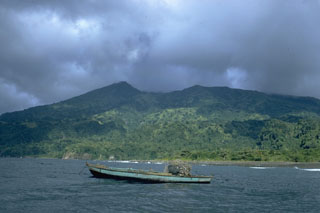Report on Soufriere St. Vincent (Saint Vincent and the Grenadines) — 21 July-27 July 2021
Smithsonian Institution / US Geological Survey
Weekly Volcanic Activity Report, 21 July-27 July 2021
Managing Editor: Sally Sennert.
Please cite this report as:
Global Volcanism Program, 2021. Report on Soufriere St. Vincent (Saint Vincent and the Grenadines) (Sennert, S, ed.). Weekly Volcanic Activity Report, 21 July-27 July 2021. Smithsonian Institution and US Geological Survey.
Soufriere St. Vincent
Saint Vincent and the Grenadines
13.33°N, 61.18°W; summit elev. 1220 m
All times are local (unless otherwise noted)
On 27 July the University of the West Indies Seismic Research Centre (UWI-SRC) reported that seismicity at Soufrière St. Vincent (often simply referred to as “La Soufriere”) had remained low since the last episode of ash venting on 22 April. A few small daily earthquakes were recorded. Steam-and-gas plumes rose from some areas inside the crater and thermal anomalies persisted. The Alert Level remained at Orange.
Geological Summary. Soufrière St. Vincent is the northernmost and youngest volcano on St. Vincent Island. The NE rim of the 1.6-km wide summit crater is cut by a crater formed in 1812. The crater itself lies on the SW margin of a larger 2.2-km-wide caldera, which is breached widely to the SW as a result of slope failure. Frequent explosive eruptions after about 4,300 years ago produced pyroclastic deposits of the Yellow Tephra Formation, which cover much of the island. The first historical eruption took place in 1718; it and the 1812 eruption produced major explosions. Much of the northern end of the island was devastated by a major eruption in 1902 that coincided with the catastrophic Mont Pelée eruption on Martinique. A lava dome was emplaced in the summit crater in 1971 during a strictly effusive eruption, forming an island within a lake that filled the crater. A series of explosive eruptions in 1979 destroyed the 1971 dome and ejected the lake; a new dome was then built.
Source: University of the West Indies Seismic Research Centre (UWI-SRC)

